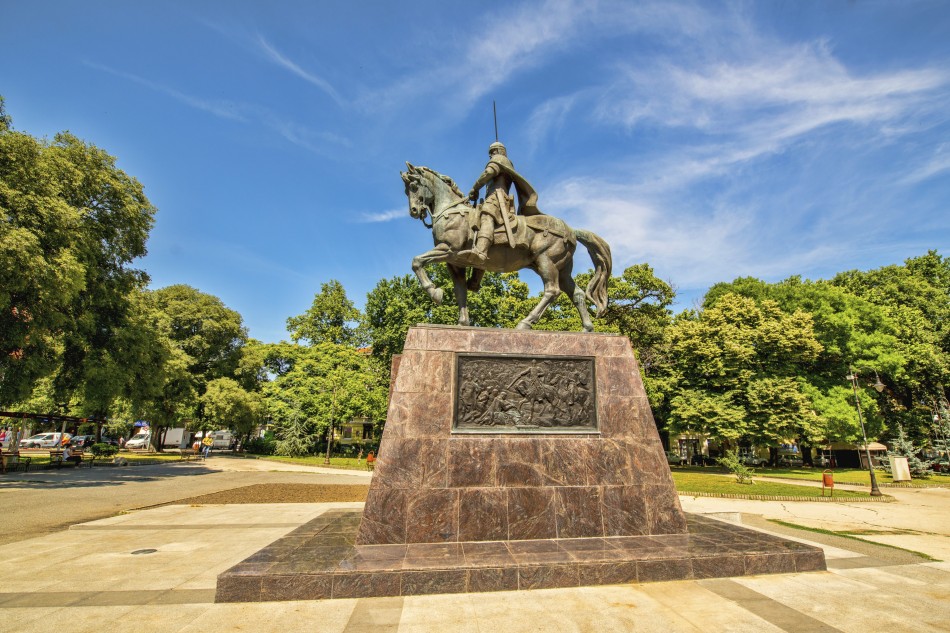 Web Content Viewer
Web Content Viewer
History
Varna and its surroundings have been inhabited since prehistoric times. It is said to be the birthplace of European civilization. From the 5th century BC. Thracian tribes inhabited the region of Varna, as well as Greeks (6th century BC), Romans (1-3 century BC), also citizens of the early Byzantine Empire (4-5th century AD) - far before the founding of the First Bulgarian Kingdom, the coming of Christianity and the creation of the Cyrillic alphabet.
Historical notes
The first traces of civilization in Varna and the region date back to the third millennium BC. The oldest golden treasure of human civilization was discovered in Varna in 1972. It was made around 4000 BC. Herodotus writes that the Greek settlers were attracted by the calm waters of the bay and settled in these lands about 2600 years ago. They found a Thracian settlement called Odessos, which the Slavs called Varna in the 7th century AD. During Roman times the city retained its economic and cultural significance. The Baths, the largest public architectural complex from antiquity discovered in Bulgaria, is also among the largest in Europe from this period. The walls of the buildings preserved to this day testify to dimensions exceeding 7,000 square meters. The Proto-Bulgarians, who came from the north in the spring of 681 AD, defeated the army of the Byzantine Emperor Constantine IV Pogonat at the mouth of the Danube. The subsequent peace treaty in Varna officially recognized the existence of the Bulgarian state. Varna is mentioned in historical sources with the battle in 1444.
With the loss of King Vladislav III Yagelo from the troops of the Ottoman Turks, Bulgaria finally came under Ottoman rule, which lasted about five centuries. Varna is the last city liberated by Russian troops. This happened on July 27, 1878, and the city was finally handed over to the Russian and Bulgarian authorities on October 23, 1878. Russia's interim government was to build an administrative apparatus in a short time. By removing the Turkish administrative power, the Russians basically used the old administrative division of the country - vilayets, sanjaks and kaazi, ie. districts, counties, districts and municipalities. The Russian authorities consider the province to be the largest administrative unit. Varna was designated as the center of the province and Major General Ivan Kishelski, a Bulgarian in Russian service, was appointed its first governor. From October 1878 he was replaced by cadet cadet N. Baumgarten. The next governor is the prominent Bulgarian politician Dragan Tsankov, the fourth is Dr. Panayot Minchovich, replaced on December 20, 1880. by Vasil Stoyanov (one of the founders of the Bulgarian Literary Society), who remained until the adoption of the Law on the Closure of the Provinces. The Varna province includes Varna, Balchik, Mankalyan, Hadjioglu Pazardzhik (Dobrich), Provadia and Shumen districts. Later Shumen and Mankalyan districts were abolished. During the administrative division after 1880. Varna is designated as the seat of a district, covering Varna, Provadia, Novosel (Dulgopol), Balchik, Dobrich and Kurtbonar (Tervel) districts. After the Liberation in 1878, the city developed rapidly. Many modern buildings have been erected - since then the 150 architectural monuments that exist today. The first cotton spinning mill was opened in 1892.
In the same year, the organization of maritime merchants was founded. The first shipyards were built in 1907, and in 1912 the lighthouse at Cape Galata began to function. In 1926 the sea baths were built. Then the first 1,100 organized tourists arrived. Since 1913 Balchishka, Dobrichka and Kurtbonarska drop out of the territory of the district. During the administrative reorganization in 1934, when the districts were abolished and districts were formed, Varna became part of the Shumen region. During this period, district governors were such prominent participants in the liberation struggle, politicians and public figures as Ivan Drasov, Todor Peev, Mr. Ivanov, Zheko Iv. Zhekov and others.
After September 9, 1944. Varna has been designated as the center of the district and Georgi Traikov has been appointed district director. With the Law for distribution of the territory of the Republic into districts from 1949. Varna became the center of a district, which included Varna, Provadia, Dobrich, Balchik, Generaltoshevska and Tervel districts. On August 18, 1987. the ninth Ordinary National Assembly passed a law on a new administrative division of the country, according to which the districts were liquidated and districts were created. Initially, the Varna district covered the territories of the former Varna, Dobrich and Shumen districts, but later all three became independent districts.


